Cellulitis is a condition where the connective tissue becomes inflamed. It is characterized by an acute and spreading inflammation of the skin and the subcutaneous tissue, which are the deeper layers of the skin. In adults, it usually develops on the legs, face, and arms, and in the case of the children, on the faces.
Cellulitis is not the same as cellulite, which is deformed fatty tissue that gives the skin an orange-peel appearance. Both conditions are connected only by similar wording.
Within the infected place on the skin, there are also other symptoms:
There may also be a red line running from the infected skin to the nearest lymph nodes (the result of infection of subcutaneous node vessels), usually enlarged.
If the inflammation spreads further, general symptoms appear, characteristic of the ongoing inflammation in the body:
To diagnose![]() , the doctor performs a physical examination (looks at the affected part of the skin) and orders blood tests. With cellulitis, inflammatory markers such as CRP and ESR may be elevated. To determine the appropriate antibiotics for treatment, conducting a microbiological examination of swabs taken from the infected areas of the skin is significant. It will reveal the specific bacteria responsible for the disease.
, the doctor performs a physical examination (looks at the affected part of the skin) and orders blood tests. With cellulitis, inflammatory markers such as CRP and ESR may be elevated. To determine the appropriate antibiotics for treatment, conducting a microbiological examination of swabs taken from the infected areas of the skin is significant. It will reveal the specific bacteria responsible for the disease.
Antibiotic therapy![]() is commonly used to treat acute inflammation. It's important to continue taking the prescribed antibiotics until all symptoms have disappeared, which can take up to 2 months.
is commonly used to treat acute inflammation. It's important to continue taking the prescribed antibiotics until all symptoms have disappeared, which can take up to 2 months.
In addition, painkillers are also used, but only selected ones and only in exceptional situations. It is better to avoid NSAIDs during the acute phase of the disease, as drugs in this group can lead to severe complications, such as necrotizing fasciitis.
If the disease has attacked a limb, you should take care of its proper position – it should be raised to facilitate blood flow.
In severe cases, the patient must be hospitalized. Then, antibiotics are given intravenously.
Sometimes, the infection can spread through the bloodstream throughout the body. It can lead to the development of potentially fatal sepsis![]() with symptoms such as:
with symptoms such as:
If cellulitis occurs on the face, there is a risk that the infection will spread to the meninges and brain.
The cause of cellulitis![]() is a bacterial infection. Staphylococci are usually responsible for cellulitis – most often Staphylococcus aureus. In some cases, the cause of the disease may be Streptococcus A. The infection most often occurs after mechanical damage to the skin (e.g., after piercing ears, tattooing, after surgery), burns, or bites.
is a bacterial infection. Staphylococci are usually responsible for cellulitis – most often Staphylococcus aureus. In some cases, the cause of the disease may be Streptococcus A. The infection most often occurs after mechanical damage to the skin (e.g., after piercing ears, tattooing, after surgery), burns, or bites.
In children under six years old, a common cause of cellulitis is the bacterium Haemophilus influenzae, which mainly causes respiratory infections (like influenza) and bacterial meningitis. In this case, the condition appears mainly in the face, arms, and upper body.
The development of cellulitis can also occur after a person is scratched or bitten by a cat or dog carrier of the Pasteurella multocida bacteria. In rare cases, the infection is caused by the erysipelas mite (Erysipelothrix rhusiopathiae), which can enter the human body, e.g., after damage to the skin by a fish or crab while swimming in the sea. The same bacteria can cause cellulitis after a skin injury while working with pigs or poultry.
However, cellulitis often develops without breaking the continuity of the skin. People struggling with eczema, psoriasis, mycosis of the skin (especially with the so-called athlete's foot), and other inflammatory skin diseases are most at risk of this type of infection.
The group at risk![]() of developing cellulitis also includes people who:
of developing cellulitis also includes people who:
It's significant to prioritize, during the prevention![]() of cellulitis, skin care. Keeping your skin clean and moisturized can prevent cellulitis by washing away harmful bacteria and preventing cracks that allow bacteria to enter the body.
of cellulitis, skin care. Keeping your skin clean and moisturized can prevent cellulitis by washing away harmful bacteria and preventing cracks that allow bacteria to enter the body.
To prevent or reduce dry skin, apply moisturizer within three minutes of taking showers or baths. If you have dry hands, applying moisturizer after washing them and frequently throughout the day can help relieve the dryness.
To prevent skin damage, be mindful during activities like working out, gardening, or cooking. Such injuries include cuts, scrapes, burns, sunburns, frostbite, insect stings, and abrasions. By taking precautions, you can avoid potential harm to your skin.
If you have a skin injury, it is significant to tend to it immediately. First, wash the wound with soap and water. Next, apply an antibiotic ointment and cover the wound with a bandage. Remember to clean and change the bandage every day, or as often as your doctor suggests, until the wound has healed.
Keep your nails correctly groomed to avoid accidentally scratching yourself with a broken nail. While cutting your fingernails and toenails, it is essential to be cautious and avoid injuring the surrounding skin.
Promptly treat infections such as athlete's foot or impetigo to prevent the development of cellulitis. Signs of an athlete's foot![]() may include:
may include:
Additionally, managing other medical conditions![]() like diabetes, eczema, leg ulcers, or peripheral artery disease (PAD) with the help of a doctor can significantly lower the risk of developing cellulitis again.
like diabetes, eczema, leg ulcers, or peripheral artery disease (PAD) with the help of a doctor can significantly lower the risk of developing cellulitis again.
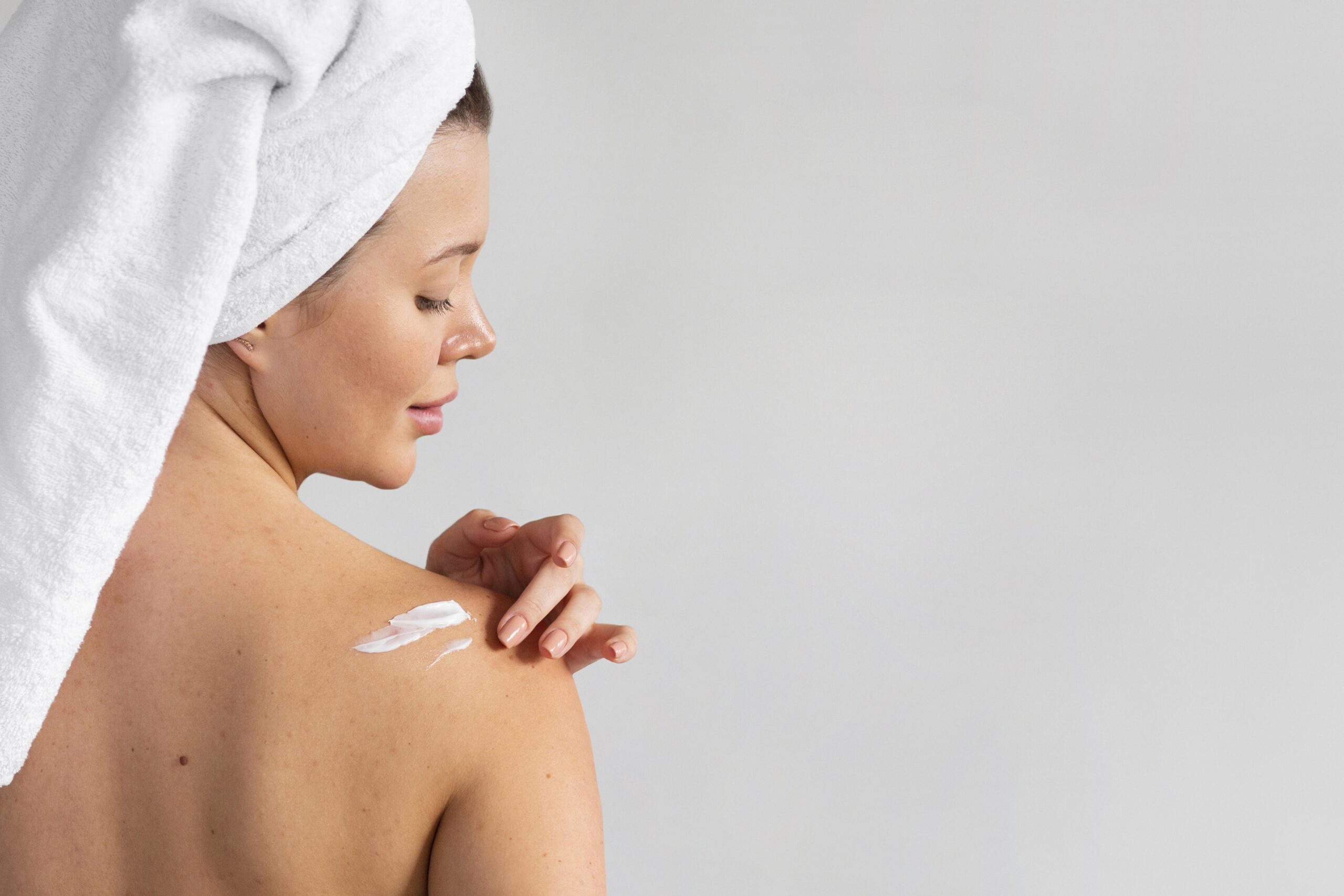
As mentioned above, cellulite and cellulitis are two different conditions.
Cellulite![]() is not a disease. So-called orange peel skin is an aesthetic problem that affects women of all ages. N nodules appear visible on the skin surface on the thighs, buttocks, abdomen, and arms. These changes in the subcutaneous tissue, which result from uneven distribution of fatty tissue, are unnecessarily the cause of many women's complexes.
is not a disease. So-called orange peel skin is an aesthetic problem that affects women of all ages. N nodules appear visible on the skin surface on the thighs, buttocks, abdomen, and arms. These changes in the subcutaneous tissue, which result from uneven distribution of fatty tissue, are unnecessarily the cause of many women's complexes.
Men![]() don't usually have cellulite. In their case, it is scarce. The main reason for this is that the formation of pathological fatty changes in the subcutaneous tissue is closely related to the production of estrogens. These female hormones are often responsible for the development of cellulite.
don't usually have cellulite. In their case, it is scarce. The main reason for this is that the formation of pathological fatty changes in the subcutaneous tissue is closely related to the production of estrogens. These female hormones are often responsible for the development of cellulite.
Looking at the physique of both sexes, you can see that different organisms store lipid cells in different parts of the body. Another reason cellulite does not affect men is the difference in the structure of the fatty lobules. Fatty and connective tissues are arranged horizontally in the female body and men, obliquely.
Genetic predisposition partly affects the tendency to develop cellulite, but the leading causes![]() of this condition include:
of this condition include:
Cellulite is not exclusively a concern for mature women. Adolescent girls may also experience the development of orange peel skin texture due to changes in their hormonal balance during puberty.
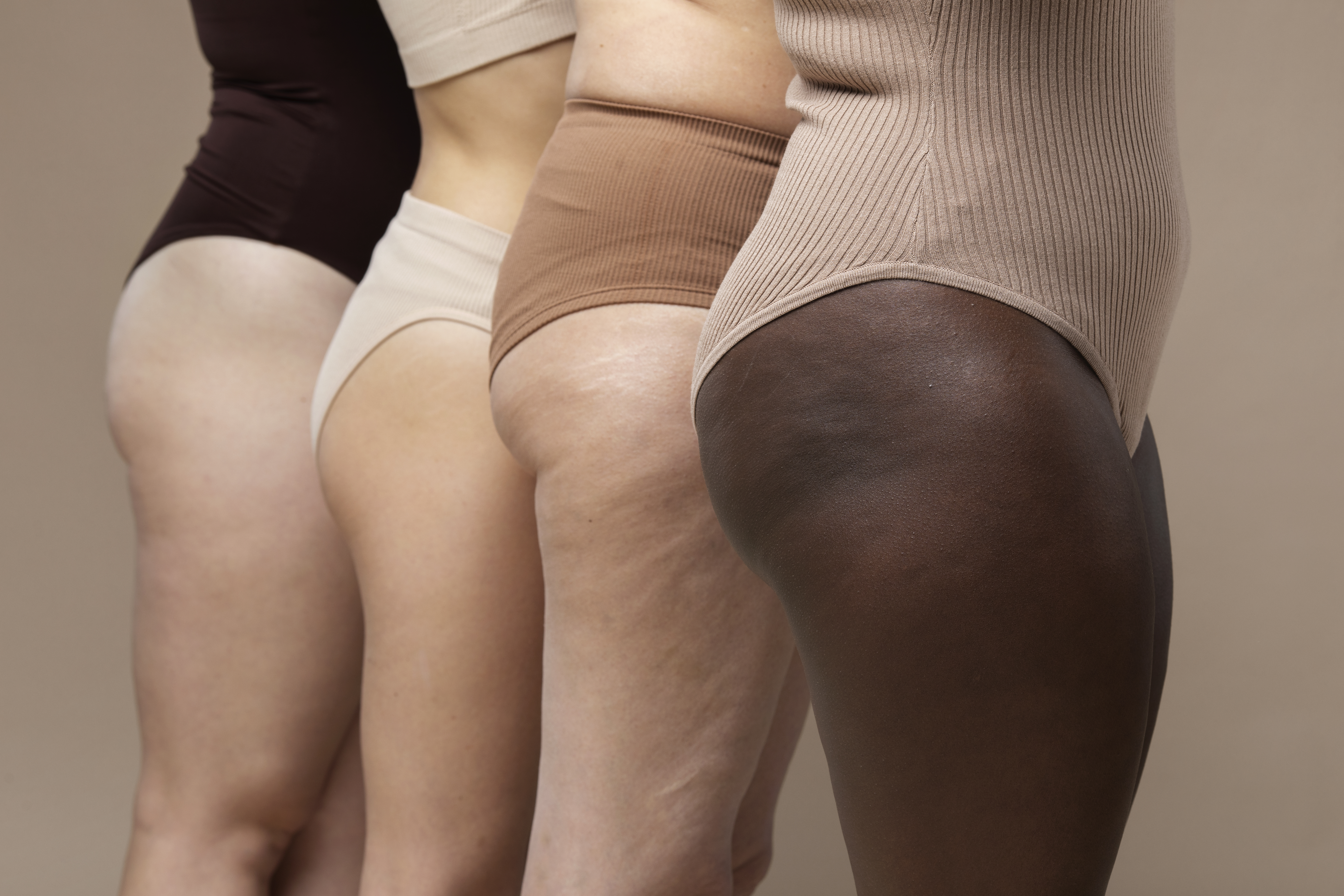
As the first causes of cellulite, we can distinguish between the excessive accumulation of water in the subcutaneous tissue (aqueous cellulite) and the growth of fat cells (adipose cellulite).
In both cases, there is an increase in volume and an uneven distribution of lipids, which is visible in the form of folds on the skin. The formation of the so-called orange peel skin takes place in several stages![]() .
.
In the first phase, lumps formed under the skin are hardly noticeable (only after squeezing a part of the body). This condition indicates a loss of elasticity in the subcutaneous tissues, venous and lymphatic stasis, as well as the accumulation of fat by adipocytes.
In the second stage, the furrows become more visible when pressing a skin fold or tensing the muscles. At the site of cellulite, swelling can be seen, which is a consequence of the deposition of fat cells in the subcutaneous tissue, the growth of collagen fibers, and the tightening of blood vessels.
The third stage of cellulite development is diagnosed when folds on the skin are also visible in the resting position. Collagen structures surround subcutaneous clusters of adipocytes and emphasize furrows.
The fourth phase is a state in which nodules and lumps can be seen even through clothing. Cellulite puts more and more pressure on blood vessels and nerve cells, which can cause pain when pressed against the skin.
Water cellulite can occur in women who have hormonal disorders or problems with blood and lymph microcirculation. Sometimes, incorrectly selected contraceptives result in changes in the subcutaneous tissue. The appearance of fatty cellulite is often a consequence of rapid weight gain.
Since cellulite can be the result of such actions and factors as improper diet, lack of physical activity, addictions, long and hot baths, and wearing tight clothes to get rid of visible folds, it is worth modifying your lifestyle.
The solution to the problem with cellulite may be to visit an aesthetic medicine doctor. During the visit, he will assess the type and stage of cellulite and select the appropriate treatment. If you are experiencing the early stages of orange peel skin, which is caused by pathological lipid deposition in the subcutaneous tissue, it is possible to eliminate this issue. However, if cellulite has already progressed to the point of large, fibrotic thickenings and furrows, it may be more challenging to resolve.
This condition of the subcutaneous tissue is problematic to treat, and the process of dissolving hard lumps does not always bring the expected results. Even after applying appropriate treatments, the skin may not regain proper elasticity and complete smoothness.
Women for whom cellulite is a big problem often decide to undergo treatments performed in aesthetic medicine offices or by cosmetologists. Among the offered methods of anti-cellulite therapy![]() there are:
there are:
The effectiveness of individual treatments may vary depending on the offices where they are performed. Each body reacts slightly differently to the effects of certain methods. Some ladies may be satisfied after using a given therapy method, while others will not notice satisfactory results.
There are various types of products available for sale to help eliminate cellulite at home. Among them, the following can be distinguished:
Certain external products are suitable for body wrapping in areas with altered adipose tissue. This treatment involves applying the appropriate preparation onto the body, preferably after exfoliating, and then covering the treated skin with cling film. You can then wrap yourself in a blanket for approximately 40 minutes. After this time, wash off the cosmetic with cool water.
An amazing way to stop the development of cellulite is to pour cold and warm water alternately on the areas of the body changed by cellulite. Using this method causes the cells of the subcutaneous tissue to shrink and increase their volume, which results in improved blood circulation and faster burning of fatty deposits. Taking a cool shower also brings other advantages, e.g., it prevents the formation of varicose veins, strengthens blood vessels, firms the skin, and speeds up metabolism.
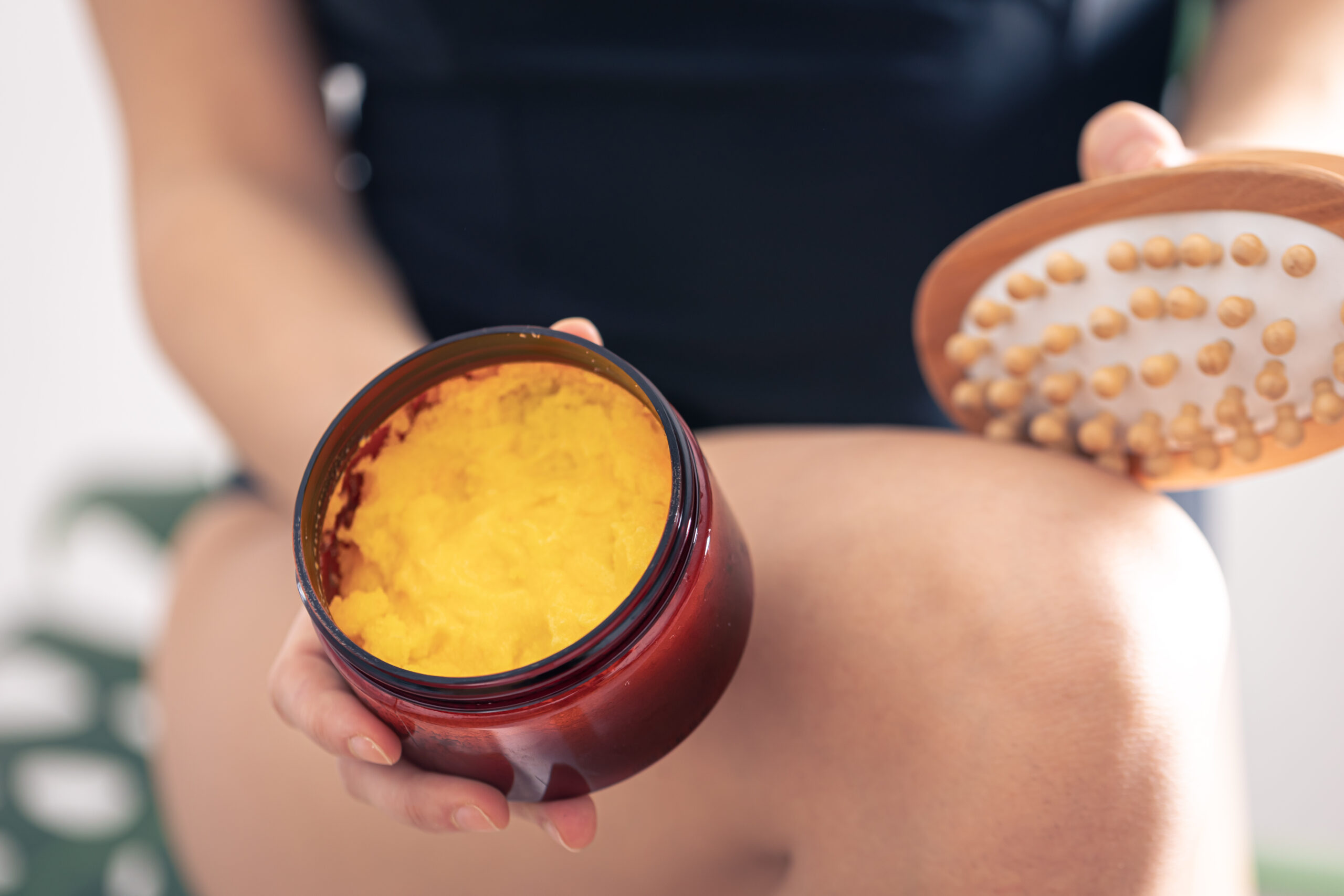
One of the most significant changes that should be implemented to deal with the problem of cellulite is diet modification. Among the products that lead to the deepening of this condition are:
When preparing meals, it is worth enriching them with green vegetables, wholegrain bread, pasta, and groats. It is necessary to remember proper hydration. Drinking about 2 liters of fluids a day improves the work of internal organs and helps remove excess water from the body, which is very helpful in the presence of water cellulite.
People who want to get rid of cellulite should reach for reliable information on methods that help reduce the effects of this condition. Anti-cellulite treatments often have contraindications to their use and this issue should not be underestimated.
Products for external use may contain ingredients that cause a thermoactive effect, which for some may be associated with a very uncomfortable experience – a feeling of pinching and burning.
That is why before starting any treatment always consult your doctor. Ask the specialist for advice on healthy solutions.
Table of Contents
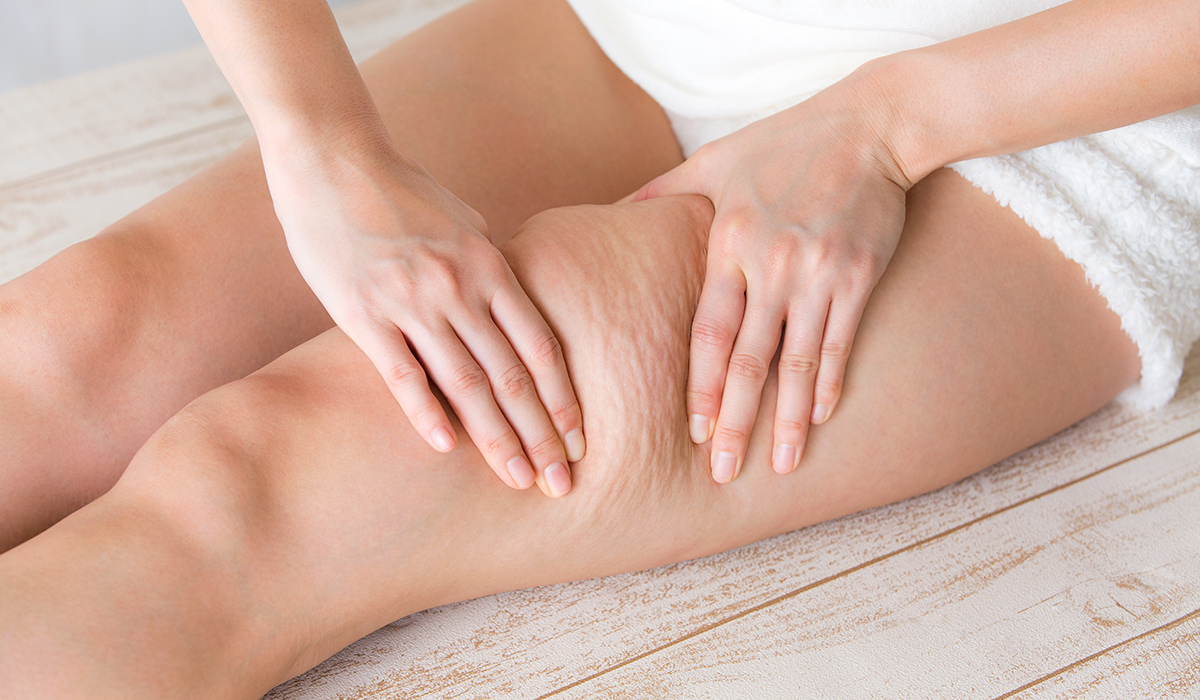
Cellulite is an abnormal distribution of adipose tissue, leading to changes in the subcutaneous tissue. Why is this happening? How… read more »
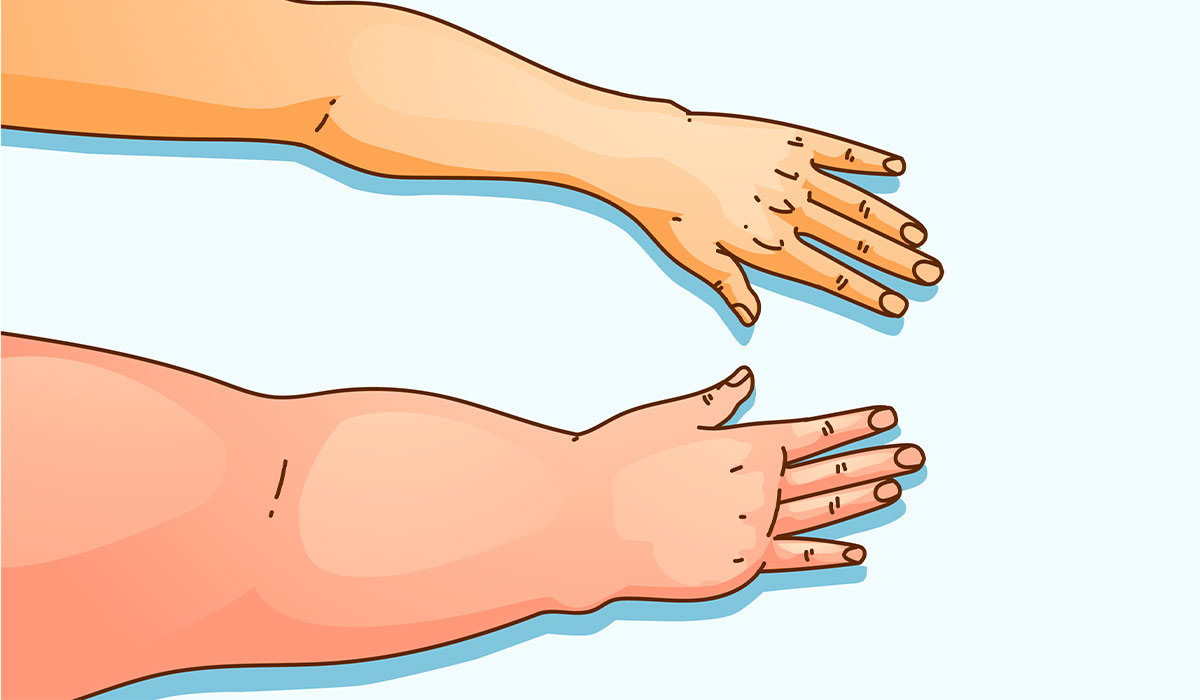
Lymphedema is swelling caused by non-physiological lymphatic stasis. What are its causes? What is the diagnosis and treatment of lymphedema? read more »
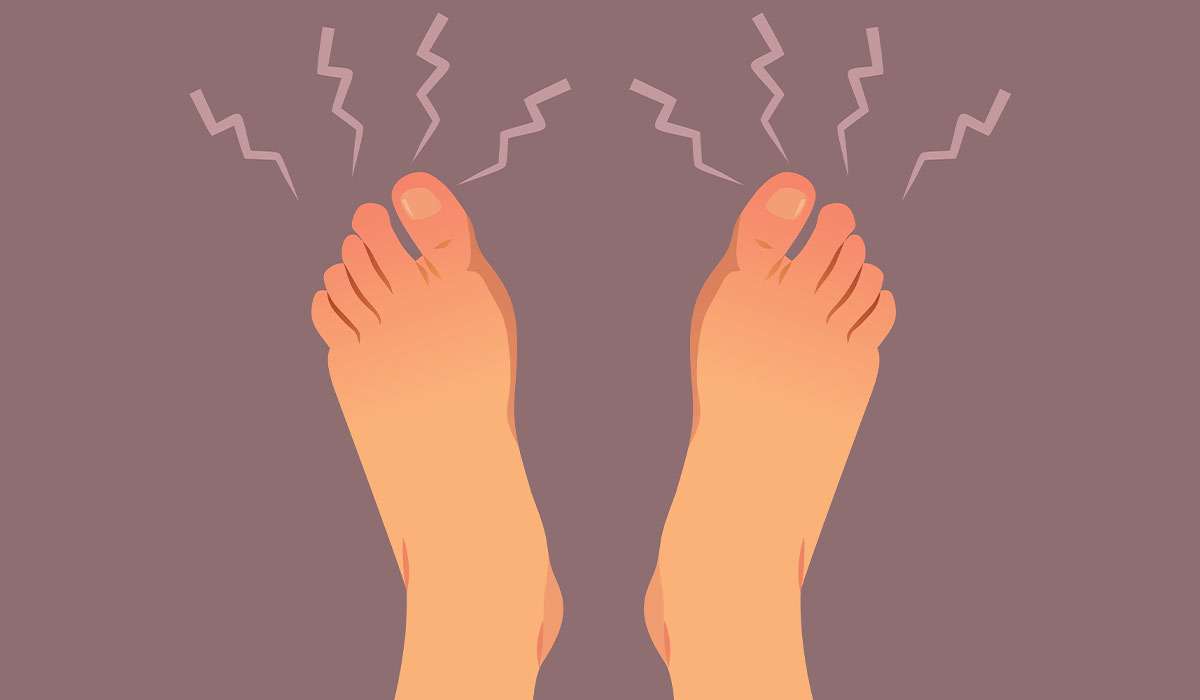
An athlete's foot, or tinea pedis, is an infection of fungal origin that affects the feet. It is usually mild… read more »
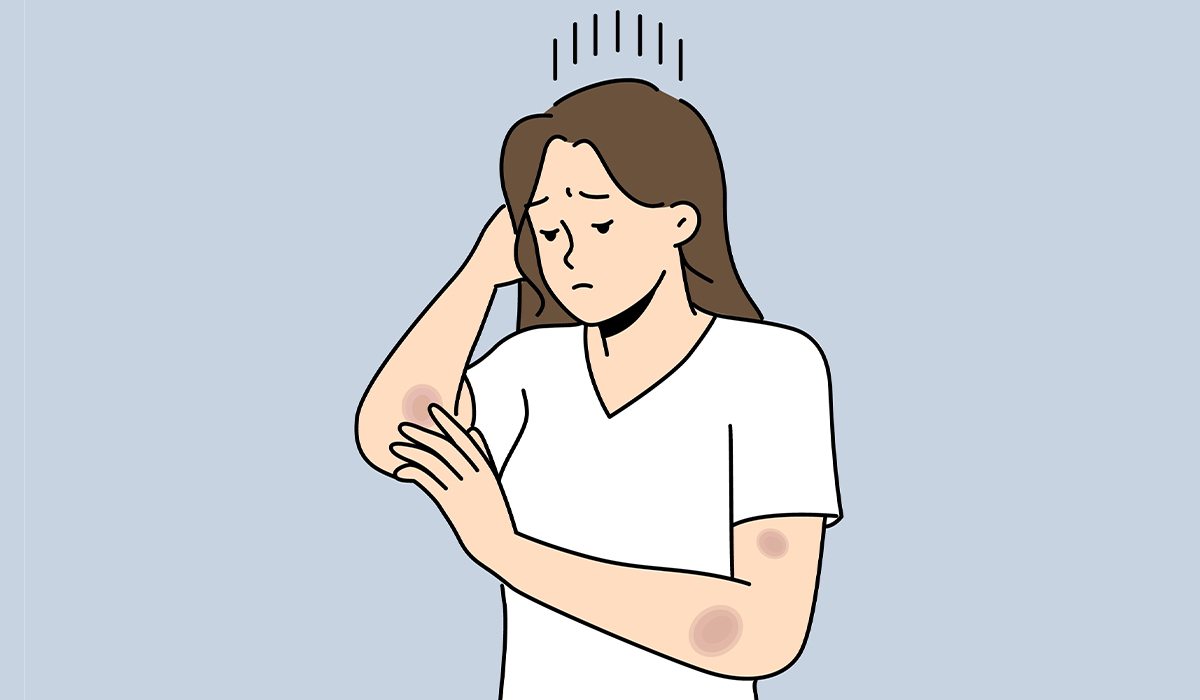
A hematoma is a specific sign that is most often caused by trauma. However, the cause can be more serious.… read more »

Cryotherapy is a treatment that uses the body's natural defenses to very low temperatures. What health benefits does it bring?… read more »

An abscess is a pocket of pus that emerges when bacteria cause an infection, leading to swelling in the organism's… read more »
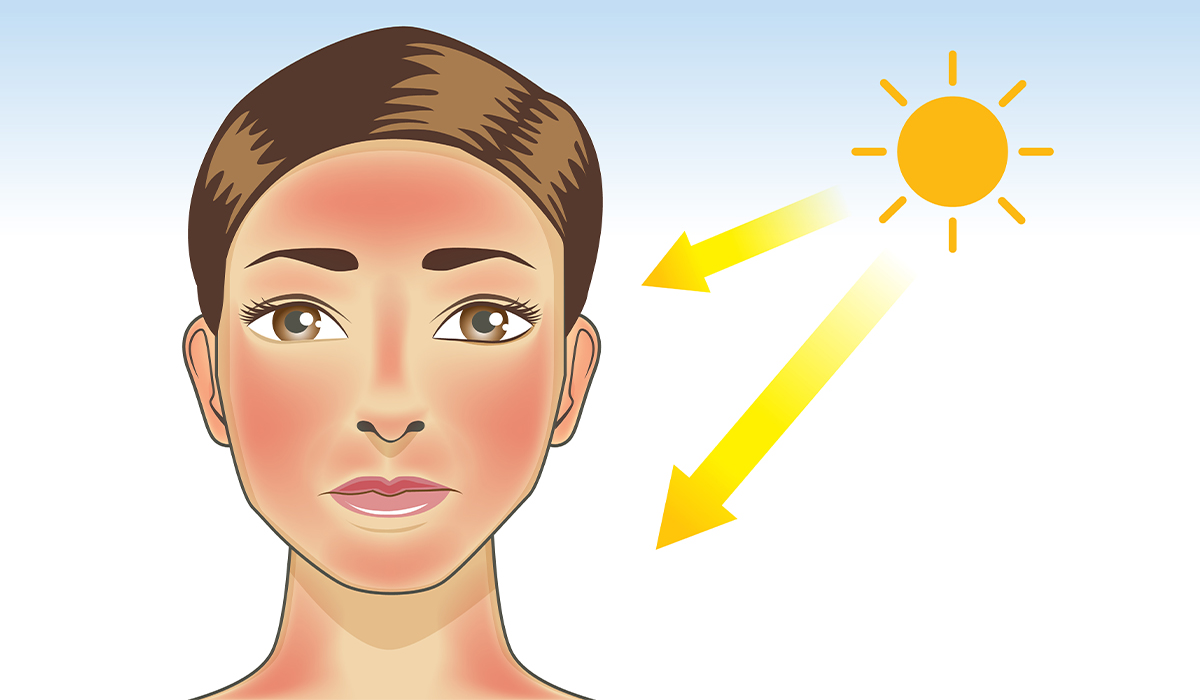
Sun Poisoning is a more severe form of sunburn. Additional distressing symptoms may occur. Learn about the effects of sun… read more »
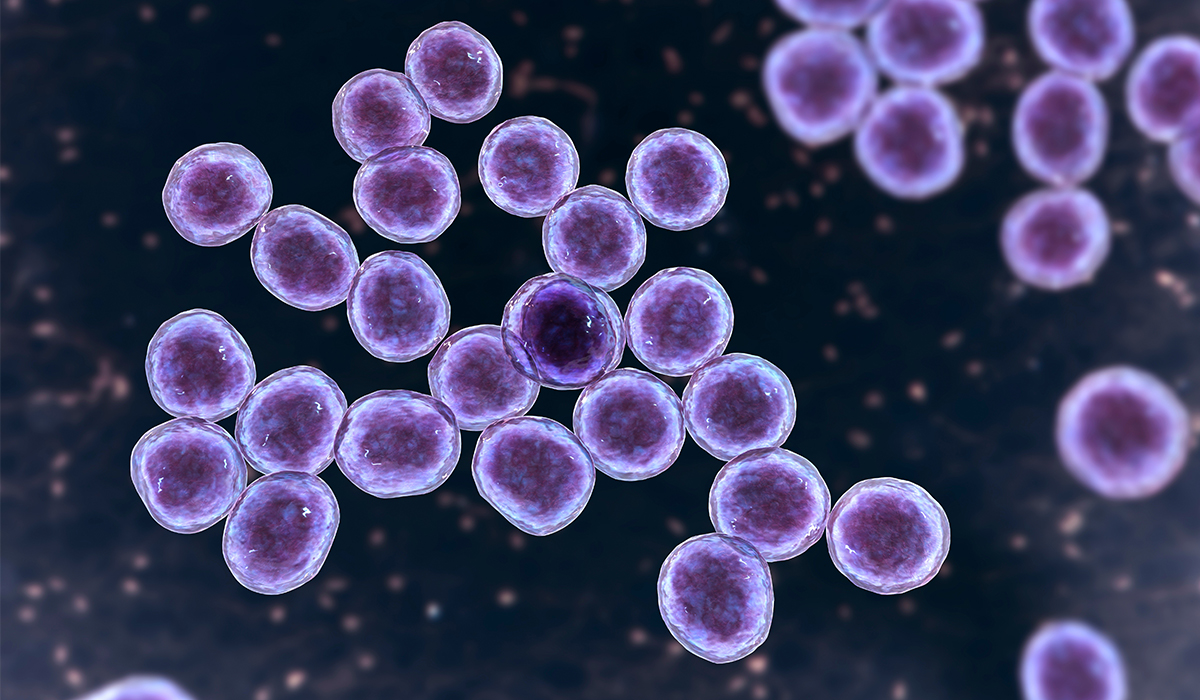
MRSA infection is a medical condition in which antibiotic-resistant bacteria attack the body. The infection can be asymptomatic or very… read more »
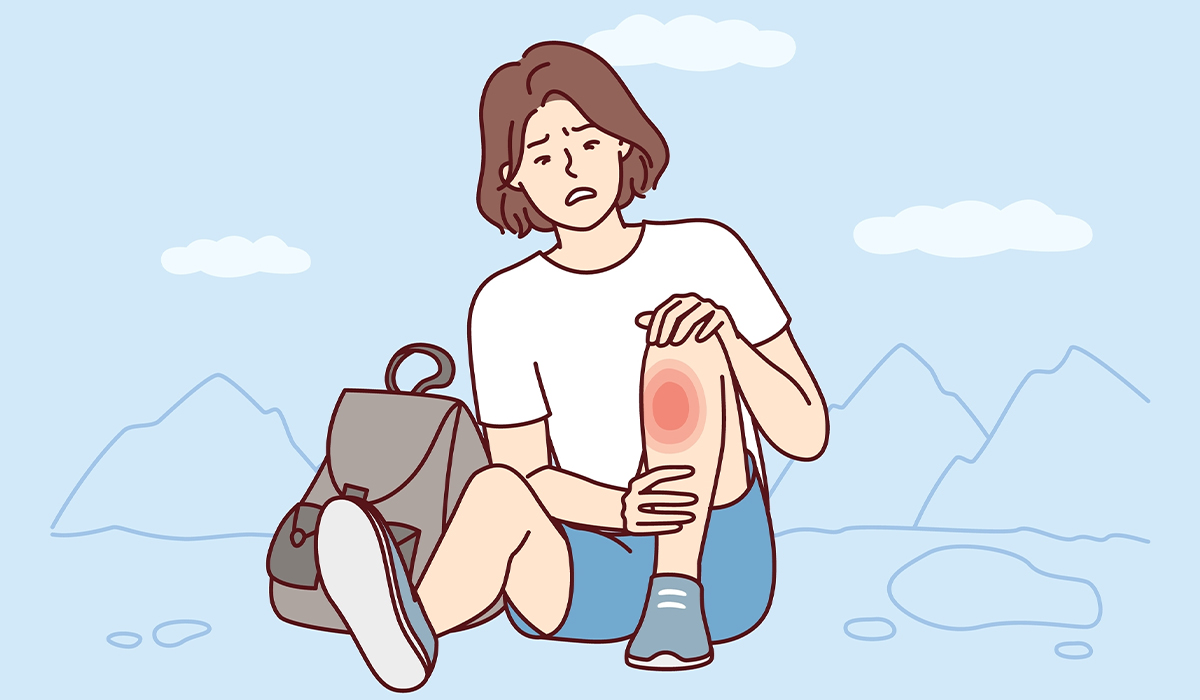
A bruise is a common injury that occurs when small blood vessels beneath the skin rupture and leak blood into… read more »